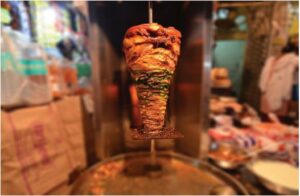
If in Mumbai, there’s anything that could be associated closely and only with the city itself, it’s Street Food. And, the food comes in all shapes and sizes, in all forms and at myriad costs. There’s something for everyone here; For the strict vegetarians there’re the dosa and idli, for the fish lover, there’s the fish thali served on the streets for as low at Rs 30 per plate, for the rushed, there’re kebabs and vada pavs, for the first-timer there’s the Bombay Bhel so linked to the city and its stories
Mumbai is known to have some of the most awe-inspiring architectural marvels among the urban centres in the country. The architecture is a blend of Art Deco, Gothic, Victorian, Indo-Saracenic and Contemporary architectural styles.
And then, there’s ganne ka juice, nimbu paani, aam ras, chaas, lassi and you name it to wash the food down. The sights, sounds and the smells of food rafting through your nostrils are sure to entice the most resolute. It isn’t a surprise that thousands of Mumbaikars thrive on street food for subsistence, out of choice and habit. The foods are the best here…and not restricted to a particular zone, type, cuisine or variety.
The one thing about the monsoons that the quintessential Mumbaikar looks out for, it’s the kebabs that come associated. It’s a regular sight: Kebabs on skewers being readied for customers huddled in groups below umbrellas at corners of lanes; amidst market places even on the pavement. Nagpada and all along Mohammad Ali Road are known for roadside vendors making brilliant kebabs that come meaty and so soft that they almost melt in the mouth. The boti kebabs garnished with onions, chopped tomatoes and fresh mint leaves are simply too good to be dodged.
The best of kebabs
And then, there are the usual sheesh kebabs which turn out to be the best bets for meals. Sheesh kebabs permit one to use any combination of meats, seafood, fruits and/or vegetables to please any palate, making it the most preferred choice.Kebabs can be prepared well in advance as opposed to most other foods that need to be cooked and served fresh. It’s the best thing to make when you want to indulge in a social get-together without having to stay in the kitchen for long hours.

For the uninitiated, it may be news to note that Reshmi Kebab’s origins can be traced back to the Moghul era. The name is derived from the succulence of the meat after prolonged marinating and light braising. While usually, chicken, beef or lamb meat is used, sometimes prawns or scallops are good substitutes too. And, the monsoons associated with kebabs aren’t restricted to benefit non-vegetarians only, there’re the luscious Hara bhara kebabs that are hot favourites among vegetarians.
Made with a mildly-spiced mix of various greens accordingly the name ‘hara bhara’, the kebab’s mix is precooked and comes in the form of patties. They’re so simple to make even at home. Whenever you’re ready to serve, all you need to do is deep- fry the kebabs in hot oil. You could serve with sweet and spicy jelly dip. All it takes is less than five minutes to prepare.
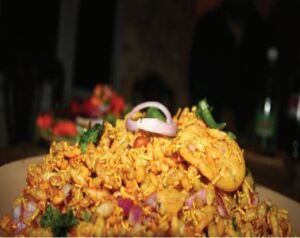
Street food safer than ever
Today, street food is as safe as can be. Having a bhel puri or those endless pani puris at Mumbai’s Chowpatty is safe as ever. Why, Mumbai’s Chowpatty at Girgaum and Juhu also managed to procure India’s ‘Clean Street Food Hub’ certification on 5 March 2019.
Ironically, this came within a month of the Food and Drug Administration cracking down on 27 restaurants across Mumbai, suspending their licenses and issuing show-cause notices for violating basic food and safety guidelines. Apparently, eating at a roadside eatery is as safe as dining at a restaurant, if not safer.
So, reportedly 80 stalls at Juhu Chowpatty and 30 stalls at Girgaum Chowpatty offering pani puri, bhel puri, pav bhaji, golas and sodas were observed closely by the Food and Drug Administration officials over six months before being awarded the tag. Now, “a seal of assurance that the food has been cooked in clean conditions following hygiene standards and is absolutely safe to eat,” has been provided to the stalls.
All stall workers use clean water, gloves, uniforms, caps and have waste-bins lined up at regular intervals. Staying safe is serious business for the stall owners. After all, they get audited by FDA every three months.
Incidentally, the FDA clean tag that Mumbai’s Chowpatty earned was on the lines of Ahmedabad’s Kankaria Zone, the nation’s first ‘Clean Street Food Hub’ certification earned in September 2018 after the zone’s personnel received intensive training in cooking and hygienestandards laid down and ascertained by officials of the Food Safety and Standards Authority of India (FSSAI) and Gujarat Food and Drug Control Administration.
The FDA authorities conduct regular raids on restaurants across Mumbai and issue show-cause notices to them if found violating food and safety guidelines. The idea isn’t to force them to shut shop but to comply with safety norms to ensure that they do not put public health at risk.
So, in keeping with the trend, FDA had, a while earlier, clamped down on more than 500 popular restaurants and finding hygiene and food safety violations in more than 74 per cent of them. A large number of restaurants across Mumbai had ignored mandatory health checks of staff.
The issue of staff shortage also plagues FDA which is manned by less than 300 food inspectors who have to monitor lakhs of restaurants. Owing to acute staff shortage that plagues this industry, most cannot retain staff for too long. Maintaining records and ensuring they meet hygiene. Now with the ‘Clean Street Food Hub’ tag, the risks of eating out are minimised immensely and Mumbaikars can binge at Chowpatty.
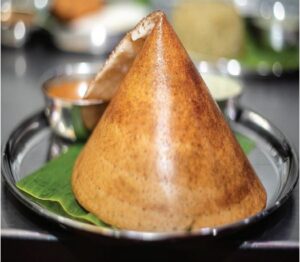

Ramzan
Mumbai’s mini Madras
Matunga’s restaurants – a distinct cry from others – are known to take immense pride in their gourmet specialities made of Coimbatore ghee considered a lot superior to labeled ghee products. Food lovers and regular visitors to the restaurants in the zone swear by the authenticity of Matunga’s food joints.
Incidentally, most of the cooks here aren’t employed – they work part-time. Much in demand, these cooks earn a fortune by cooking at weddings and other ceremonies that require an expertise – so rare to come by. The food here is probably the best you can get anywhere in Mumbai.
Tamilians are very particular about their food. Their adai, elai adai has to be just perfect. Hotels here are known to not cheat their customers. Matunga seems to have retained an originality that’s synonymous with old Madras. If at all, there’s any place to grab an original Kanjeevaram idli, ven pongal and some original filter coffee, try Matunga.
Popularly known, and for all the right reasons, as mini-Madras, the area virtually transports you out of Mumbai. And, bang into a Chennai by lane. Elderly women with chandan applied over their foreheads; bare-chested vadhyars (priests) hustling their way to the nearest temple and young girls in pavadai and dhavani (half sari) outfits is what Matunga’s all about.
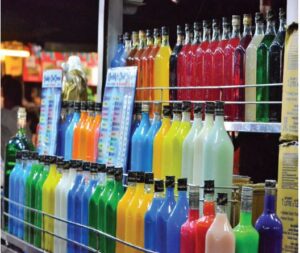
The feast of Ramzan outdoors
And then, if it’s Ramzan, it’s the feast that follows the fast which grabs every non- vegetarian Mumbaikar’s fancy. And, what better way to feast other than in style and at Mohammad Ali Road near Minara Masjid. There is no way a Mumbaikar would not know about the zone’s Khau Galli where thousands throng to soak in the festivities, learn about the grace of locals and grab a treat of a lifetime with street food that’s symbolic of the zone almost like a patented form of work.
It isn’t without reason that thousands make a beeline for Bhendi Bazaar, without fail, for a week during Ramzan. Now, particularly after the two years of lockdown, this year may well be a return to normalcy. The street food at Khau Galli near Minara Masjid is just so good that it is said to make the fasting well worth it. It sure offers something to look forward to.
It’s against the backdrop of the beautifully-lit Minara Masjid, that the settings of Ramzan come alive for foodies. The perfect time to visit the Khau Galli here is around 7.30 pm when everyone breaks their fast and the feast begins. Within minutes, Khau Galli has a sea of feasting revellers flowing into the zone, with some stopping by to taste a falooda or two or grab a plate of kebabs swiftly before moving on.

Jalebi that taste like gulab jamuns
Among the legendary delicacies in here is the mawa jalebis, also known as khoya jalebis and usually unmissable. And, if it’s mawa jalebis, it will have to be the Burhanpur Mawa Jalebis displayed proudly in a distinct heap below a signage that reads ‘King of Mawa Jalebi’. Try tasting it and you will realise you simply can’t disagree. They make them at breakneck speed and instead of the usual crisp jalebis you’ve had all your life, these made with mawa, look like the regular ones yet taste like gulab jamuns.

Burning one’s tongue while eating is a regular occurrence here as you jostle with surging customers while trying to quickly gorge on jalebis that taste simply out of this world.
Here, it’s common to find food lovers lining up religiously from evening at their favourite food stalls that may open easily a couple of hours later. The teeming crowds here are huge and patrons are ‘expected to know’ what to order.
Apart from the regular meat delicacies in Khau Galli, is Noorani Milk Centre’s Masala Milk which sell a range of sweets and drinks. The best of the lot, the Masala Doodh in small glass bottles, is served chilled and flavoured with a special masala along with kesar (saffron) and turmeric. It’s a big favourite with regulars who swear by it and usually buy a dozen odd to take back home.
Providing meals from homes
Food is the most essential of all needs. And, for most living away from home and working in the Mumbai, it’s home-made food cooked by home-makers that matters the most. After all, it’s clean, healthy and economical too. Little wonder then that most of the city’s students, workers even locals travelling far to work make a beeline for the nearest slum where a few home-makers sell fresh food right outside their homes for customers to take-away and consume at their homes, offices or workplaces.
So, when the national lockdown was announced by PM Modi and restaurants forced to shut business, locals were left with little option but cook at home. If it weren’t for, say, Colaba Koliwada’s home-makers, thousands of migrant workers and students – living in basic small rooms with no scope to cook – would have to grapple with hunger. Those days, the fear of hunger was real and palpable.
True to their wont, Koliwada’s residents worked around the lockdown and provided basic food items like eggs, bread and snacks to ‘outsiders’ while keeping the mandatory ‘safe distance’ and wearing masks throughout. And, from the times of containment where the entire Nagari was locked down exclusively for residents, they’ve come a long way.
Today, the opening up has led to a mushrooming of food providers – all home-makers with their husbands pitching in – cooking the choicest of wares – safe and economical to those without kitchens and viable food options. Mothers and mothers-in-law too pitched in with their bit.
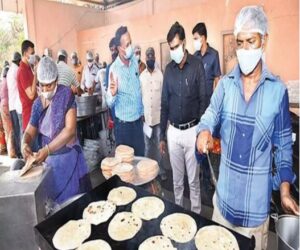


Among the newer food providers, a few home-makers proved to be hugely talented. So now, in most of the city’s slums there are a multitude of options for residents, passers-by and the general working population. Locals are preparing and selling dosas, idli, wada, sambhar, chutney, puri bhaji, keema pav, sandwich, ‘Frankie’, etc.
The unassuming vada pav is synonymous with Mumbai. And, Colaba, Mumbai’s oldest precinct, isn’t any different. So, once the lockdown opened out, it had to be the vada pav business to start off again. Now, with things inching back to normalcy, it’s the Vada Pav filling, healthy and affordable, that has made its comeback. Its importance is realised the most following the lockdown that has affected thousands financially.
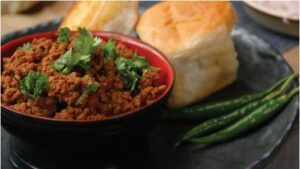
Demographic diversity at play
A lot of Mumbai’s eclectic zones, especially the city’s older history-rich areas, had a demographic diversity that was evident from the variety of food items that were made available, even during the lockdown.
Some prepared and sold keema pav during the day and sandwiches in the evenings. During Ramzan, when people would be looking desperately for something as basic as even bread, a lot of stalls decided to start selling bread and eggs. Then, there was a demand and it helped thousands make a living even during the lockdown.
They’d start the day at 6.30 in the morning selling keema pav, bread, eggs, etc. And, in the evening, make different sandwiches that are in high demand in the area. Their new venture helped give them a new identity also…and that stayed.
The street food providers braved the Coronavirus situation to fend for themselves and provide for those venturing out to work despite the threat. Their voyage is no less brave than a doctor’s in these times. Providing food at one’s doorstep to keep another alive is as risky a proposition as treating one to stay alive.
Food and the street sort is, by far, the most promising of prospects for travellers to and residents of the ‘masaledaar’ city of Mumbai.


